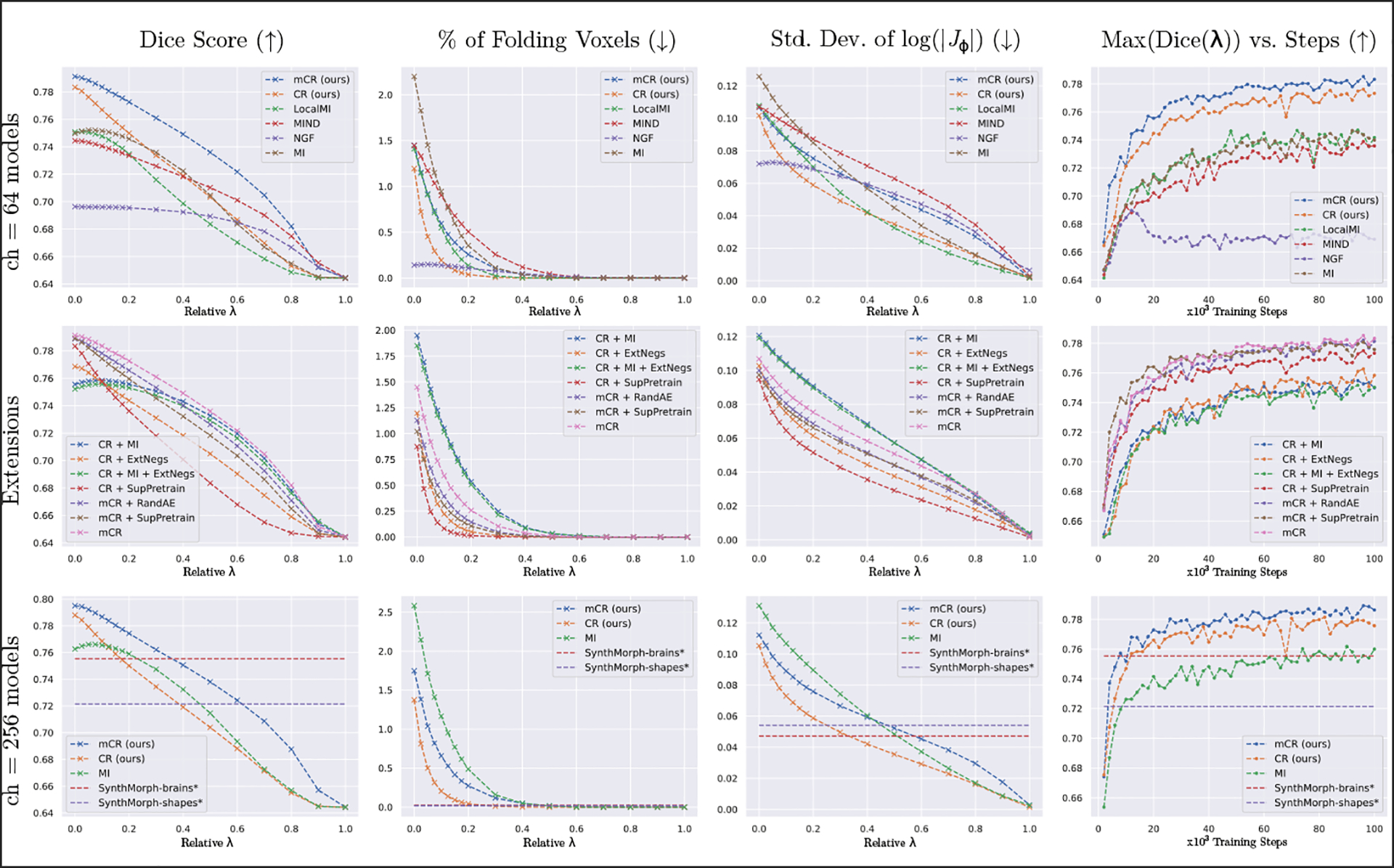Fig. 3.

Plots of registration accuracy vs. (col. 1), deformation qualities vs. (cols. ), and accuracy vs. training steps (col. 4). Benchmarks are performed against commonly used multimodality losses (row 1), extensions of the proposed techniques (row 2), and recent modality-pair agnostic methods (row 3). Across baseline losses, CR and mCR achieve the best tradeoff between accuracy and deformation characteristics (row 1, cols. 1–3). Further, using external losses and/or negatives reduces performance and supervised pretraining does not yield notable improvements (row 2, cols. 1–3). Compared to SynthMorph-brains [15], CR and mCR obtain higher accuracy (row 3, col. 1) in the and ranges, respectively, at the cost of more irregular warps (row 3, cols. 2–3). See Table 1 for an analysis of trading off accuracy for smoothness.
